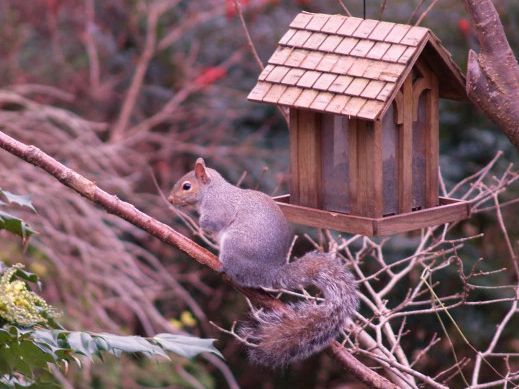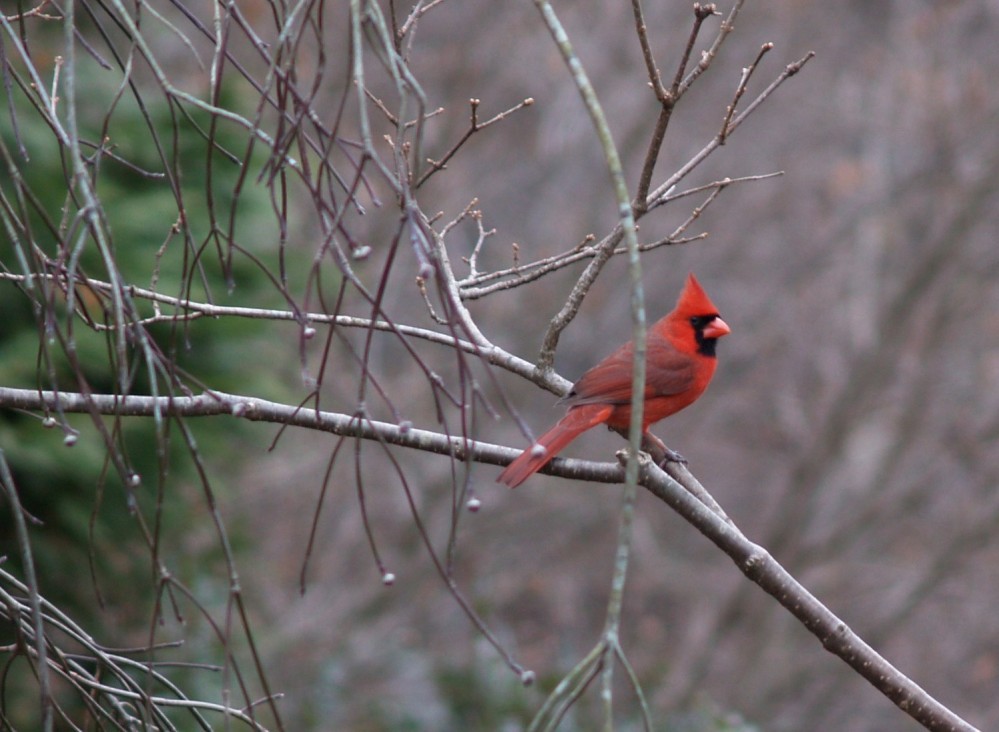Squirrels are less frequently seen at the birdfeeder after applying a pepper sauce to sunflower seeds. A year ago, a recommended switch to safflower seed achieved a similar result, but purchasing fifty pound bags of sunflower seeds and the pepper sauce is considerably cheaper. Birds, from my observation, prefer the sunflower seeds.
As is typical when conflicts arise between man and beast, my wife is quite ruthless, and would happily rid the planet of any snake or squirrel that becomes a nuisance. In fairness, squirrels became a considerable problem in our attic for several years, and my wife has had several unpleasant confrontations with a variety of snakes in the garden and by the koi pond. Repeatedly, I advise her that it is probably best that she remain indoors.
I will state for the record that I am the more kind hearted of the two of us, but perhaps it could be argued that I am more likely than my wife to ignore a problem. It is a fact that I will end up being the one who must resolve a squirrel or snake problem, so most vanish into the wild before action is taken.
After failing to spray the late autumn deer repellent a year ago until after significant damage was done, the double winter dose was applied right on schedule in November. Though evidence of deer tracking through the garden is common, I see no damage, and expect none until the initial spring application in April.
I hear gardeners claim that repellents are ineffective, but I’ve found that alternating two types of repellent, or mixing the hot pepper sauce into the repellent every other month, works dependably. The proof, from my experience, is that it’s not unusual for me to miss a plant or two when I spray each month from April to November. When the last application wears off (usually at 5-6 weeks, depending on rainfall), deer find the ones I missed, and don’t bother the rest.
There is a bit of problem down the road, and occasionally in the forest behind the garden, with a flock of buzzards. I know what brings them around, but it seems that they just watch and wait. They’re far enough outside the garden that they’re no more than a curiosity, and even more intriguing are red tailed hawks that perch on the tree lilac branch that holds the birdfeeder. That keeps the squirrels away.
I wonder also, why geese that congregate by the hundreds on neighboring lawns, don’t encroach on our property? There’s not much to the front lawn, and the dogs are long gone, so maybe there’s not enough to bother with. Certainly, I’m not complaining. Perhaps the geese have been alerted to my wife’s reputation.
Thank you for the morning smile Dave. I love your gardening blog!
Thank you. I enjoy the writing, and the reaction from my wife when she discovers I’ve written about her again.
What kind of pepper do you mix into the deer repellant?
I use Cole’s Flaming Squirrel Seed Sauce to coat sunflower seeds in my birdfeeder, so this is what I mix with the deer repellent. I don’t think it provides additional repelling quality, but the intent is to change the scent so that deer do not become accustomed to the smell of the regular deer repellent. I currently use Bobbex, but I’ve used other brands with the same success.
I use Coles pellets and haven’t had a squirrel or any mice, chipmunks, etc. either. I don’t get goldfinches anymore though, they really don’t like pellets. oh well.
I gave up on seed mixes since birds sorted through the millet filler to get to other seed. Large bags of sunflower seeds are easily coated with a small amount of hot pepper liquid. Squirrels continue to sample the treated seed, but there are fewer and their visits briefer. I’ve noticed no changes in the type or quantity of birds. Today, a dozen cardinals move in and out of the feeder, with doves and chickadees visiting the feeder and cleaning up seed on the ground.
That cardinal is cool too. I have seen one only once, and am still amazed by how red they are. It seems like they would be targeted by predatory birds.
Along with many smaller, nondescript birds, we have many cardinals and bluejays to reward the small effort to keep the birdfeeder well stocked. Hawks regularly circle over head, and I suspect that other birds must be wary, so they stay close to the cover of trees where they are more nimble than larger birds of prey.